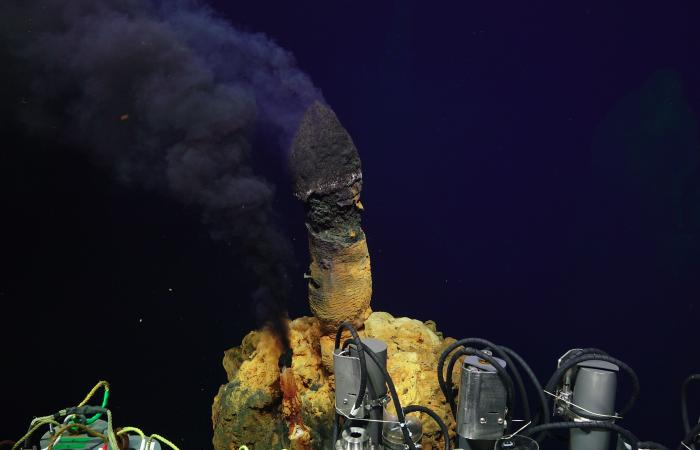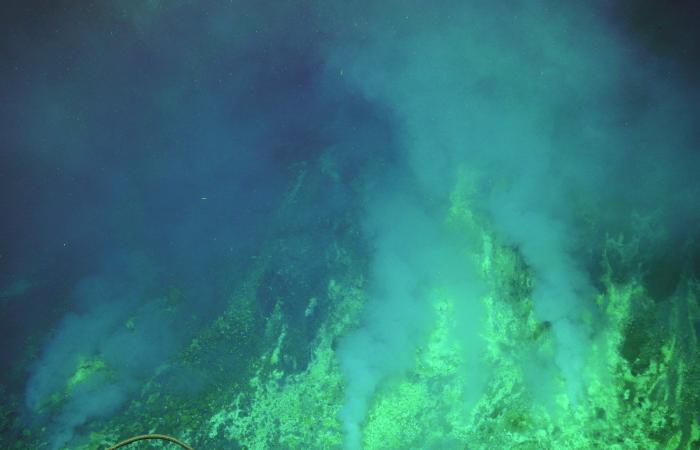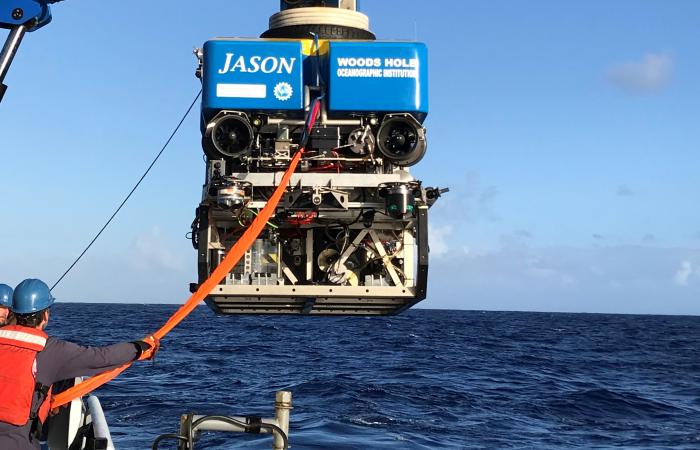-

Deep-sea hydrothermal vent chimneys on Brother's Volcano's northwest caldera wall create a unique environment for microbes. Credit: Anna-Louise Reysenbach/NSF, ROV Jason and 2018 ©Woods Hole Oceanographic Institution
-

Magmatic hydrothermal venting at the cone site in Brother's Volcano creates a microbial community distinctly different from those at nearby geological features. Credit: Anna-Louise Reysenbach, NSF, ROV Jason and 2018 ©Woods Hole Oceanographic Institution
-

ORNL contributed to the international study, which was led by Portland State University, and leveraged submersible technology from Woods Hole Oceanographic Institute. Credit: Anna-Louise Reysenbach
-

Deep-sea hydrothermal vent chimneys on Brother's Volcano's northwest caldera wall create a unique environment for microbes. Credit: Anna-Louise Reysenbach/NSF, ROV Jason and 2018 ©Woods Hole Oceanographic Institution
-

Magmatic hydrothermal venting at the cone site in Brother's Volcano creates a microbial community distinctly different from those at nearby geological features. Credit: Anna-Louise Reysenbach, NSF, ROV Jason and 2018 ©Woods Hole Oceanographic Institution
-

ORNL contributed to the international study, which was led by Portland State University, and leveraged submersible technology from Woods Hole Oceanographic Institute. Credit: Anna-Louise Reysenbach
Oak Ridge National Laboratory contributed to an international study that found almost 300 novel types of microbes living near a deep sea volcano. These microbes, which could be used in biotechnology, reveal new insights about their extreme underwater environment.
Two distinct communities of heat-loving and many acid-loving microbes live near Brother's Volcano, located about 200 miles northeast of New Zealand and 6,000 feet underwater. Known as extremophiles, these microbes thrive in water heated by magma and hydrothermal vents.
Though they live close to one another, the microbial communities reflect differences in water chemistry and temperature from geological features. In analyzing the new bacterial and archaeal families, ORNL's Mircea Podar thinks microbes like these can help better characterize extreme environments.
"We're heading to a point where microbes can be very informative about the environment they came from and even reflect some of the past," Podar said. "With more data, we can use microbes as a proxy to characterize environments where traditional measurements are challenging to capture."






